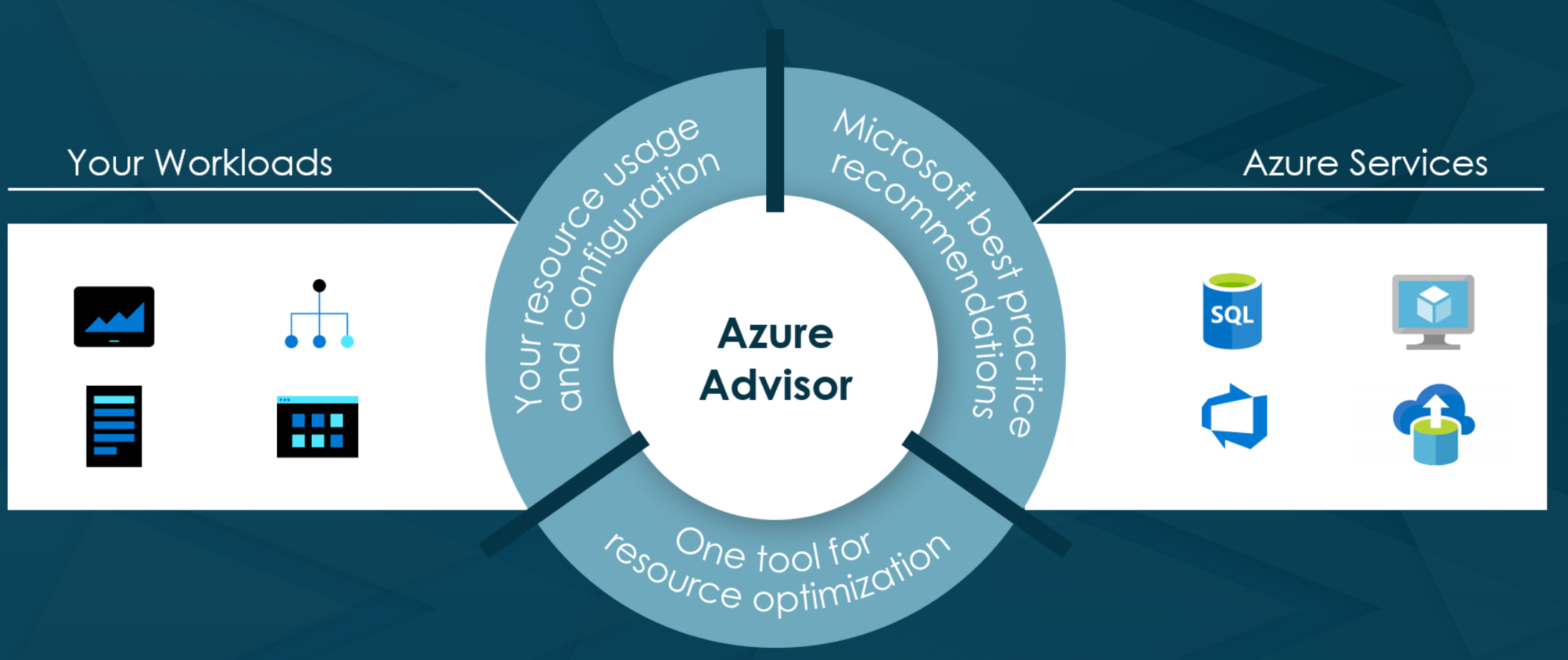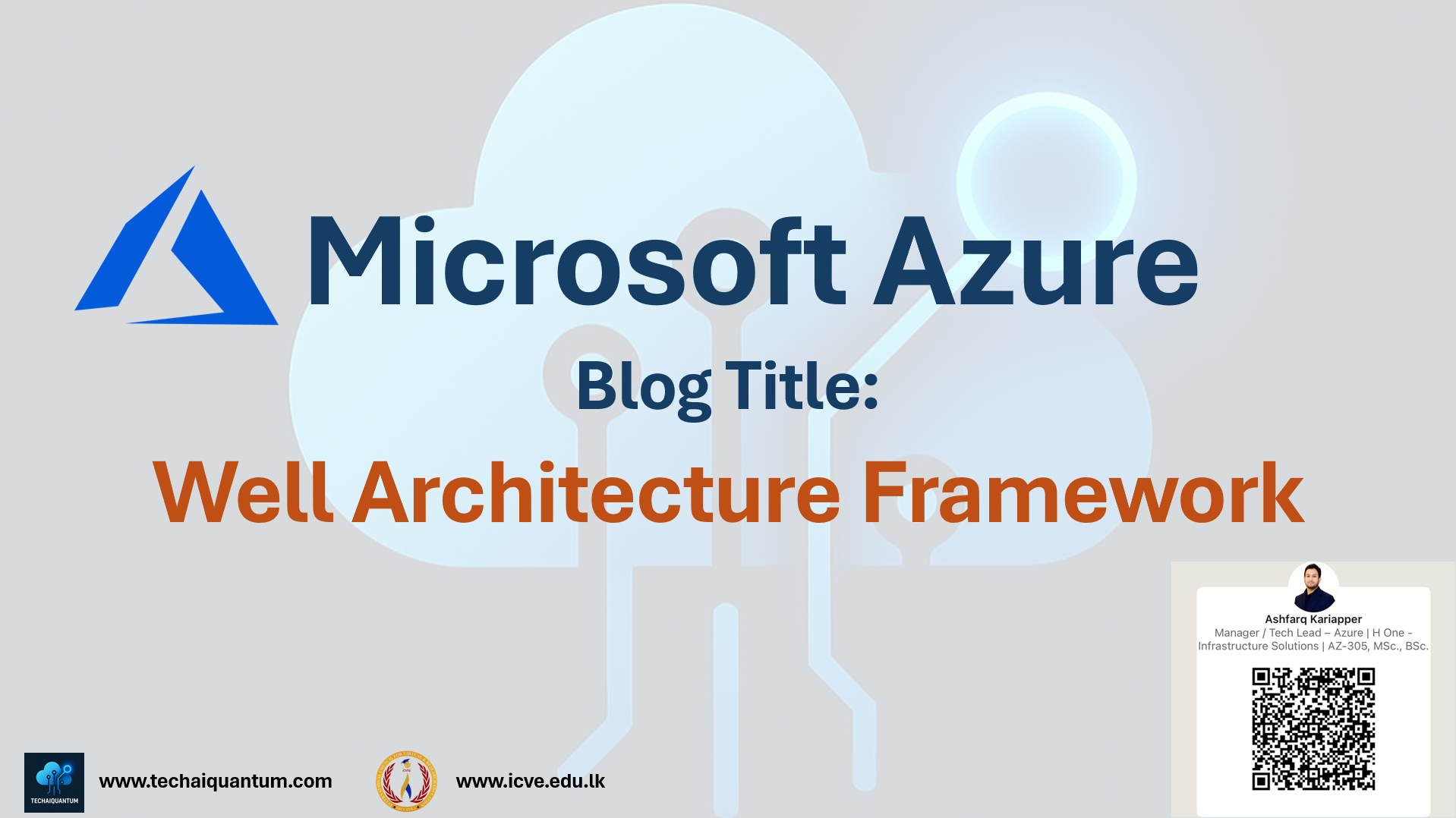Introduction
The Microsoft Azure Well-Architected Framework is a comprehensive guide designed to help solution architects build cloud workloads that are reliable, secure, efficient, and cost-effective. It provides a structured approach to designing and operating Azure solutions that deliver sustained business value over time. Here’s a detailed blog-style overview of this framework, its pillars, and how it empowers organizations to build high-quality cloud architectures.
What is the Azure Well-Architected Framework?
The Azure Well-Architected Framework is a set of quality-driven tenets, architectural decision points, and review tools aimed at helping architects create a strong technical foundation for their workloads on Azure. It encourages designing workloads that align with business goals while balancing tradeoffs between performance, security, cost, and operational needs.
At its core, the framework is about building workloads that achieve business value over time—not just launching cloud solutions but continuously improving them to meet evolving demands.

The Five Pillars of the Azure Well-Architected Framework
The framework is organized around five fundamental pillars. Each pillar addresses a critical aspect of cloud architecture and provides design principles and best practices to guide decision-making.
Each pillar includes design principles—guidelines that architects should follow—and tradeoffs, which are considered compromises balancing different priorities
How the Framework Works: Layers and Tools
The framework is structured in layers:
Architects start by understanding the pillars and their design principles, then apply workload-specific guidance, and finally leverage service-specific recommendations to build optimized solutions
Microsoft provides review tools and checklists to assess your architecture against the framework, helping identify gaps and improvement areas before deployment
Applying the Pillars: Key Highlights
Reliability
Reliability focuses on designing systems that maintain uptime and recover quickly from failures. This includes building redundancy, implementing failover strategies, and continuous testing of recovery processes. Keeping designs simple while meeting business requirements is emphasized to reduce complexity and potential failure points
Security
Security is about protecting workloads from threats by ensuring data confidentiality, integrity, and availability. This involves using Azure security features like identity and access management, encryption, threat detection, and compliance monitoring. Security tradeoffs may involve balancing ease of access with protection levels
Cost Optimization
Cost optimization encourages an optimization mindset rather than just cost-cutting. It involves understanding usage patterns, adopting budgeting and monitoring tools, and making informed tradeoffs between cost, performance, and resilience. The goal is to maximize business value without overspending
Operational Excellence
Operational excellence covers holistic observability and automation to reduce production issues. It promotes DevOps practices, continuous monitoring, safe deployment pipelines, and incident management strategies to streamline operations and improve reliability
Performance Efficiency
Performance efficiency is about scaling workloads to meet changing demands. It recommends horizontal scaling, load testing before production, and continuous monitoring to ensure workloads perform optimally under varying loads

Workload-Specific Guidance
The framework also provides tailored guidance for different workload types, such as:
- Artificial Intelligence (AI): Incorporate AI models for predictive analytics and content generation.
- Software as a Service (SaaS): Build scalable, secure, and reliable SaaS solutions.
- Oracle and SAP workloads: Optimize traditional enterprise applications on Azure.
- Mission-critical workloads: Design for high availability and resilience.
- Sustainability: Improve operational footprint and create business value through sustainable practices. Azure VMware Solution and Azure Virtual Desktop: Support legacy and desktop virtualization scenarios on Azure
This workload-centric approach helps architects focus on specific technical and business needs.
Benefits of Using the Azure Well-Architected Framework
- Improved Decision Making: Clear principles and tradeoffs help architects make informed choices aligned with business goals.
- Higher Quality Solutions: Following best practices leads to more reliable, secure, and performant workloads.
- Cost Control: Encourages a balanced approach to spending, avoiding waste while maintaining value.
- Operational Efficiency: Automation and observability reduce downtime and operational overhead.
- Continuous Improvement: Framework tools and assessments foster ongoing optimization throughout the workload lifecycle
Conclusion
The Microsoft Azure Well-Architected Framework is an essential guide for building cloud workloads that deliver sustained business value. By embracing its five pillars—reliability, security, cost optimization, operational excellence, and performance efficiency—solution architects can design resilient, secure, efficient, and cost-effective Azure solutions.
This framework not only supports initial design but also encourages continuous improvement, ensuring your Azure workloads remain aligned with evolving business needs and technological advances.
Adopting the Azure Well-Architected Framework transforms cloud architecture from a one-time effort into a dynamic, value-driven process that empowers organizations to innovate confidently on Azure.


